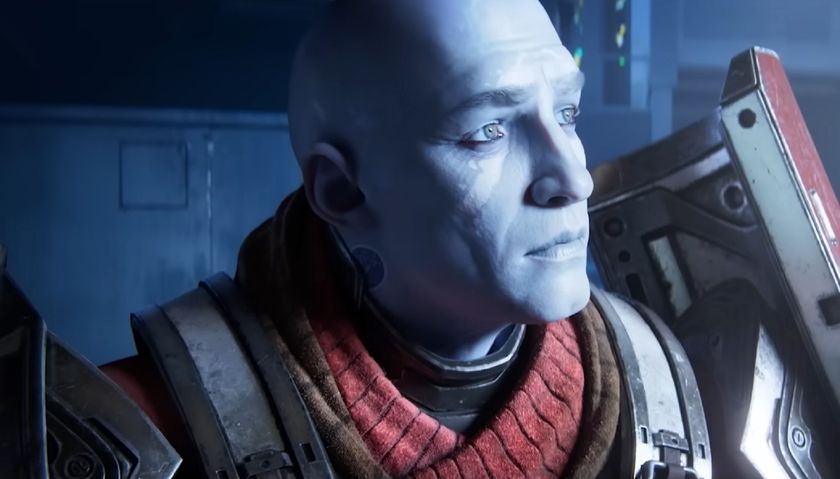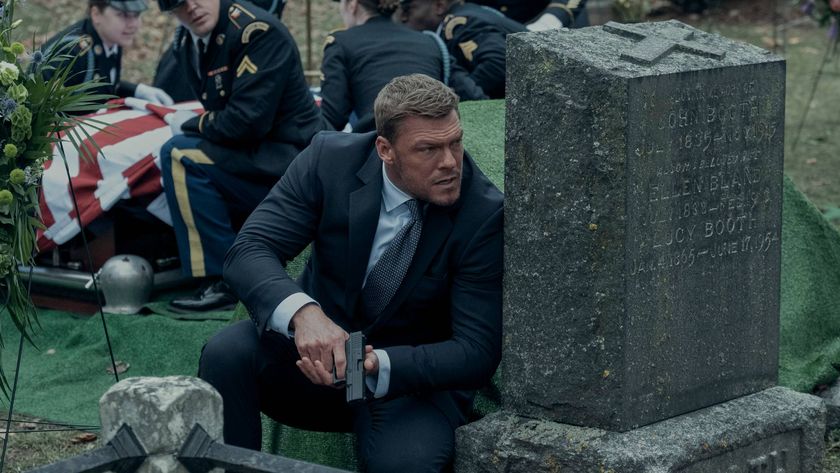Why I now suddenly love Halo after 11 years of total, uninterrupted indifference towards the Chief
In other news from 2001, Windows XP pretty good
Shooters have become glossier and more cinematic, and insanely well polished of course. But without naming any names, it’s no secret that they’ve also become increasingly less interactive. In fact some of them now almost feel like part of a different genre to the stuff that first made me a fan. Level designs are increasingly funnelled. Weapons are increasingly ‘realistic’ and similar in effect. AI is less demanding of creative play. Interactions are increasingly a case of follow the leader, do what you’re told. Playing an FPS used to feel like being a sculptor of action. Now a lot of them make me feel like I’m just an actor in someone else’s play.
The truth is that I’ve labelled myself an enthusiastic FPS player for a very long time, but over recent years I’ve only felt like a fan in principle, finding less and less examples that really gave me what I wanted. Because what was the last great mainstream console FPS built around the qualities I’m after? Singularity? Bulletstorm? Bioshock 2? And two of those tanked commercially.
So I started to gravitate towards Halo 4 a couple of weeks ago. The series had long had a reputation as a freeform shooter sandbox, so out of borderline desperation I decided that it might be time to give it another try. The development shift from Bungie to 343 Industries helped too, if only in terms of giving me an outward justification for backing down on my long-held anti-fanboyism. Pride swallowed, excuses in place, I got hold of a copy and gave it a go.

And ye gods, was coming back to Halo a beautiful experience this time around. Yes, it has issues. There’s too much repeated level design in the campaign, and too much arbitrary button-pressing by way of narrative McGuffins. But I can forgive a handful of dated old-school design crutches when they come along with so much old-school design brilliance.
Each and every time I get into a firefight in Halo 4, magic happens. In campaign, a run-in with overwhelming opposing forces isn’t intimidating or irritating. There’s no fear of the cheap bullet-hell onslaught and attritional grind that ‘certain games’ bring in such situations. There’s just opportunity and excitement. Between the inter-locking intelligence of its enemy AI and the adventure playground puzzle-box of its environmental design, playing Halo 4 today is like finding a crisp waterfall of rainbows and wishes in the middle of a baked-hard desert of uniformly coloured sand. Multiply all of the above by the sheer number of ways that every single encounter can be interpreted and reinterpreted by each combination of weapons you and your co-op partners may be packing, and you have a vision of multiple possible, completely different Halo 4s stacked on top of each other, just waiting to be unlocked by player experimentation.

And multiplayer is a revelation. Because now that I’m actively looking to Halo for something specific, I’m seeing what it can really do for the first time. After tiring of multiplayer shooters built around twitch-focused hide-and-seek and insta-kill machine-guns, what I perceived as Halo’s slowness is now obviously just a perfect pace for allowing methodical, tactical firefights.
That weapon-set isn’t insipid, as I once thought. It just demands thoughtful use and has its power pitched towards playful, completely asymmetrical cat-and-mouse combat rather than instant domination. That regenerating shield isn’t a cop-out for cowardly players. It’s a fundamental tool in facilitating drawn-out skirmishes and a back-and-forth, almost conversational combat flow. It’s also a fantastic route to poker-style battles of nerve and wits, as players back off to preserve their own shield while trying to work out exactly how much punishment their opponent can take.
Sign up to the GamesRadar+ Newsletter
Weekly digests, tales from the communities you love, and more

But you probably know all of this already, because there’s a good chance you’ve been happily playing Halo for years. But alas it’s taken 11 years and a very particular set of circumstances for me to come to appreciate it, as well as a rather hefty change of attitude. Now that I’m actively reaching out to Halo rather than poo-pooing its efforts in favour of those of its genre rivals, it’s obvious why it’s so good.
Via a combination of internal and external forces I’ve ended up really getting to know the game for the first time. To be fair to my earlier self, that can be a tricky thing to do unless you really want to, particularly when you’re dealing with the kind of great game design that thrives on subtle intricacy and depth. But the experience has been a positive one all round. You see not only do I like a new game now, and not only has that discovery really cemented what I personally want out of game design, but it’s also made me realise just how easy it is to close yourself off to the good stuff. Even if – in fact especially if - you think you’re already looking at it elsewhere.
Fanboysism. Positive or negative, it gets your nowhere.
Now to get myself a copy of Halo Anniversary and start from the beginning. Again.
You know that kid at parties who talks too much? Drink in hand, way too enthusiastic, ponderously well-educated in topics no one in their right mind should know about? Loud? Well, that kid’s occasionally us. GR Editorials is a semi-regular feature where we share our informed insights on the news at hand. Sharp, funny, and finger-on-the-pulse, it’s the information you need to know even when you don’t know you need it.













When Destiny 2 "weekly active users dropped lower and faster than we'd seen since 2018," Bungie assembled an A-Team to put out some fires: "We needed to do something"

Half-Life devs worried Gabe Newell "promised things that they couldn't possibly deliver" for the iconic FPS, but "they just didn't know" that they'd be able to do it yet




